Can I Start a Real Estate Photography Business Using a Camera Phone?
As a professional real estate photographer with 6 years of experience, I’ve only ever used a camera phone or an iPhone to shoot a handful of properties. In general, professional photography is defined by the fact that the photographer is getting paid for their service, and to provide high-quality images that meet the client’s expectations.
Cutting corners for clients’ requests often leads to bad outcomes, which is why we only consider using phone cameras for supplemental photos like hardware such as water heaters, storage rooms, water softeners, etc. The agent didn’t require the polished real estate photography quality that we usually deliver.
I have to admit that in the past, we’ve tried to cut corners to meet some clients’ requests of shooting and editing their properties at a cheaper price.
However, it always turned out to be a horrible experience for both parties involved. The clients were dissatisfied with the outcome, and they never used our services again. On our part, it didn’t represent our business well, and we regretted agreeing to the clients’ requests.
We’ve learned from those experiences and have decided not to take that approach anymore. When clients ask if we can do it cheaper, we’re honest with them and let them know that we cannot. We’ve set a standard for ourselves, and we’re proud of the quality of work we deliver. Of course, there are instances where clients request a high volume of work, and in those cases, we can offer a discount. But even then, we know our worth and what we can and cannot do.
Benefits of Using A Phone Camera for Real Estate Photography
The main benefit of using a phone camera is that it provides you with agility and flexibility that is not available with a DSLR camera. It allows you to take photos from unique angles and perspectives, including placing the phone against a wall and capturing the opposite view. Taking multiple angles of a room is also easier and quicker, as it takes approximately two minutes per photo to set up, compose, and adjust the lighting using the phone camera.
The Drawbacks of Using A Phone Camera for Real Estate Photography
One of the biggest drawbacks is that you’re limited to a single shot exposure, whereas with a DSLR camera you can take multiple exposures and bracket them together for more dynamic range. Additionally, while smartphone cameras have come a long way in recent years, the sensors simply can’t match the quality of a DSLR. That being said, if all you have is your phone, don’t be afraid to use it. Just make sure you’re setting your exposure properly and doing your best to get a well-composed shot. And while the rule of thirds is certainly useful for some shots, when it comes to real estate photography, it’s more important to focus on getting that third wall and setting your camera at light switch height for the best results.
Tips for Taking Great Real Estate Photos with a Camera Phone
If you want to shoot with a phone camera, there are some principles you’ll have to follow to achieve that goal—and it is achievable with the right customer base, which might be small.
In general, it is possible to shoot with a phone camera as long as you approach it the same way you would with a DSLR camera. It’s important to treat your smartphone just like a DSLR camera to achieve high-quality shots. The smartphone has three dimensions of movement: side to side panning, tilting up and down, and tilting left to right.
Keeping Level
When shooting with any camera, it’s crucial to keep it level, ensuring that your vertical lines are aligned and not crooked or caving inwards. If your camera isn’t straight, your horizontals and verticals won’t be straight either. Therefore, you must wiggle the camera around and adjust it until everything is aligned. A helpful tip is to shoot at light switch height, which will give you a good vantage point for capturing the room.
The rule of thirds is a fundamental aspect of photography, especially in kitchen and bathroom shots. Using an iPhone, I typically avoid the ultra-wide angle and instead opt for a 0.6 or 0.7, which is equivalent to a 16mm focal length on a DSLR camera, and it still looks pleasing to the eye
Cell Phone Photos vs Professional Photos

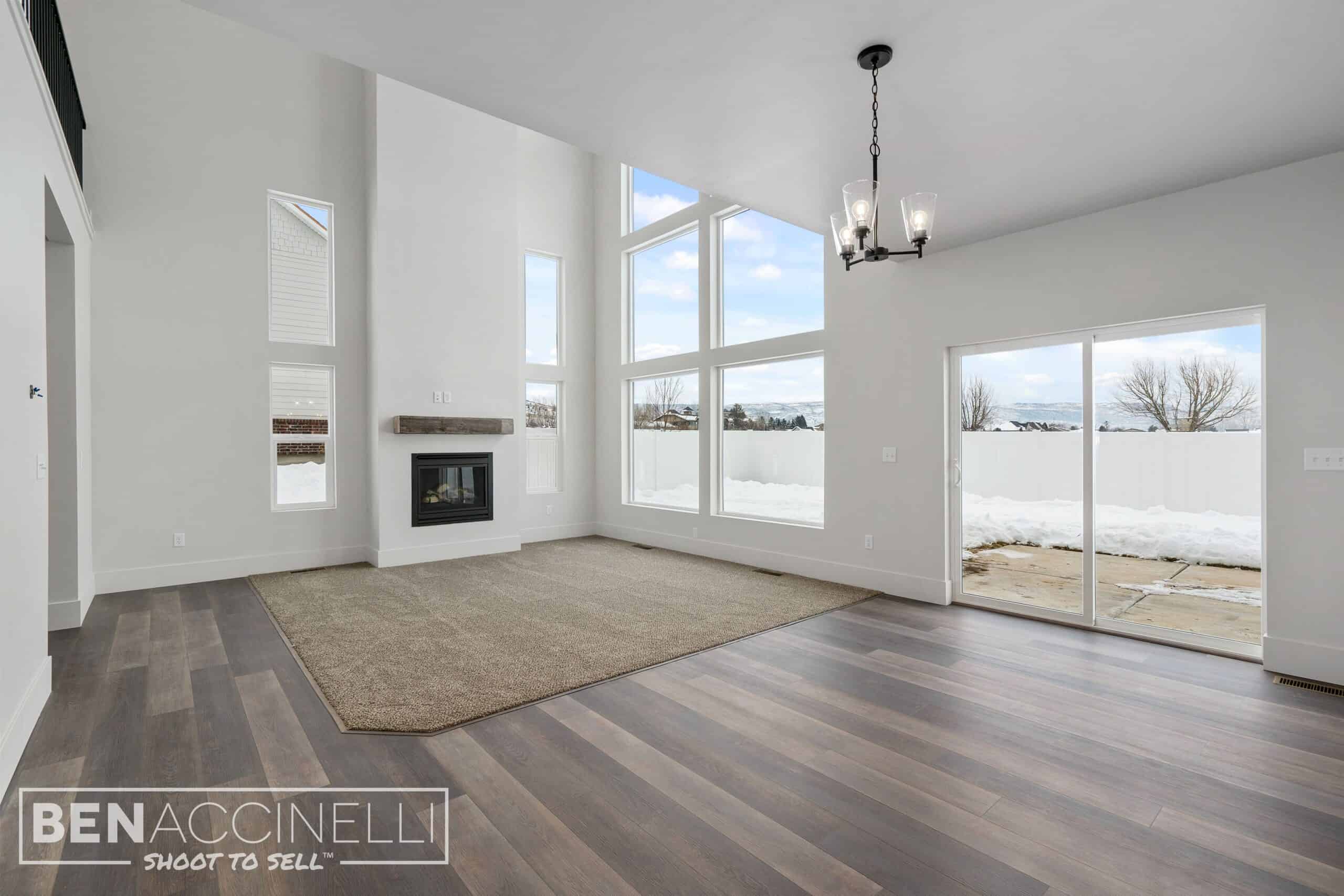
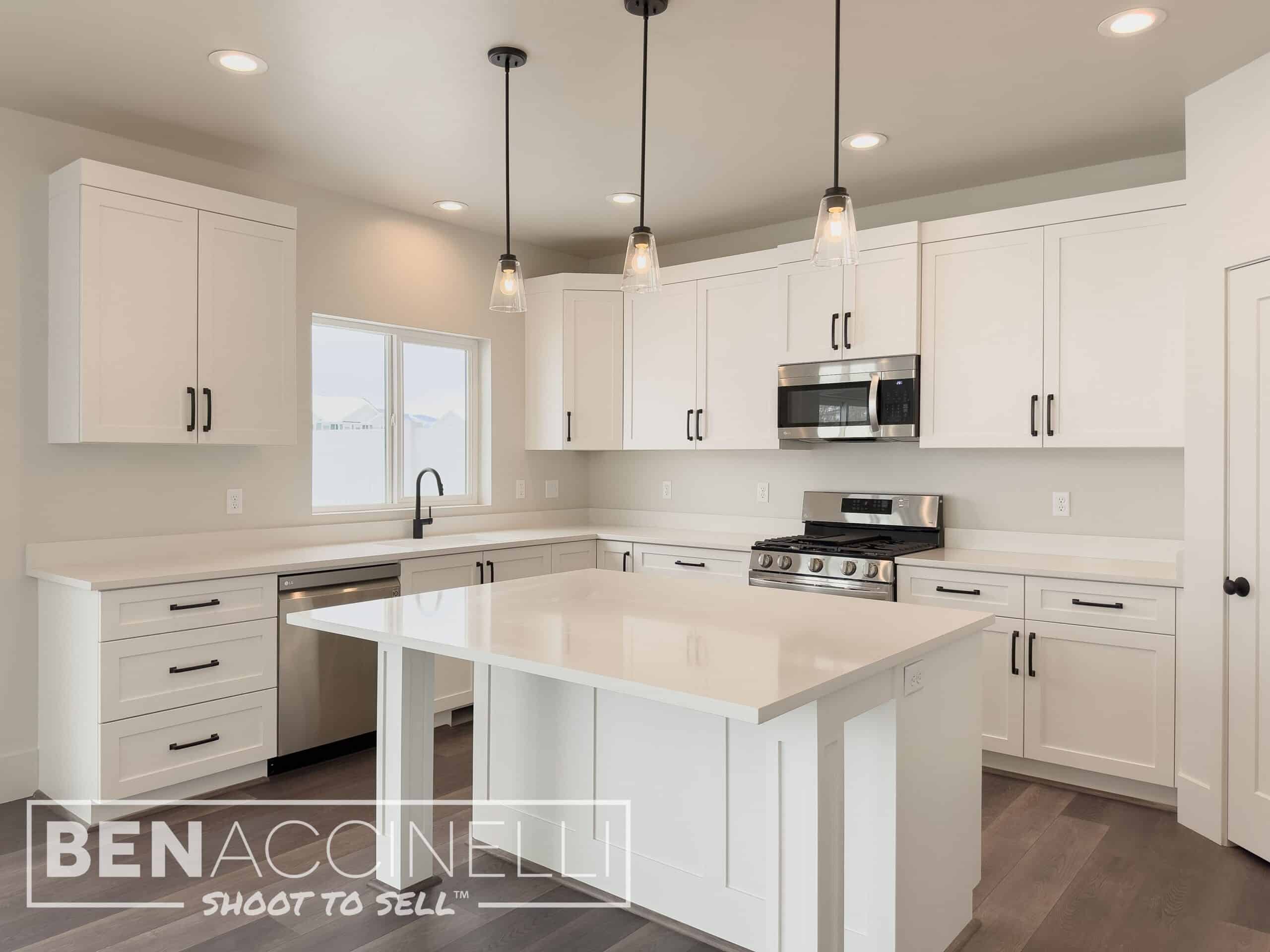
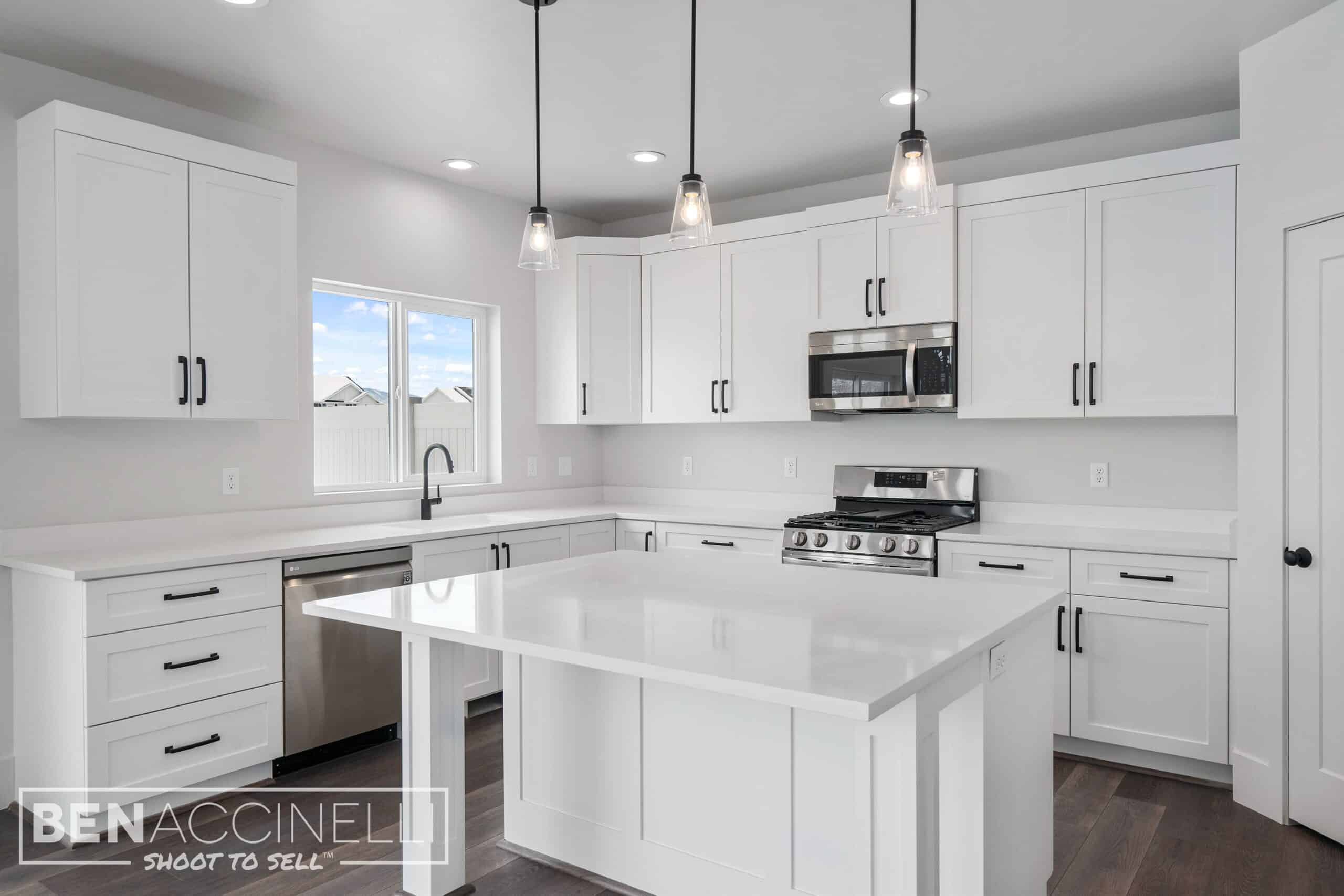
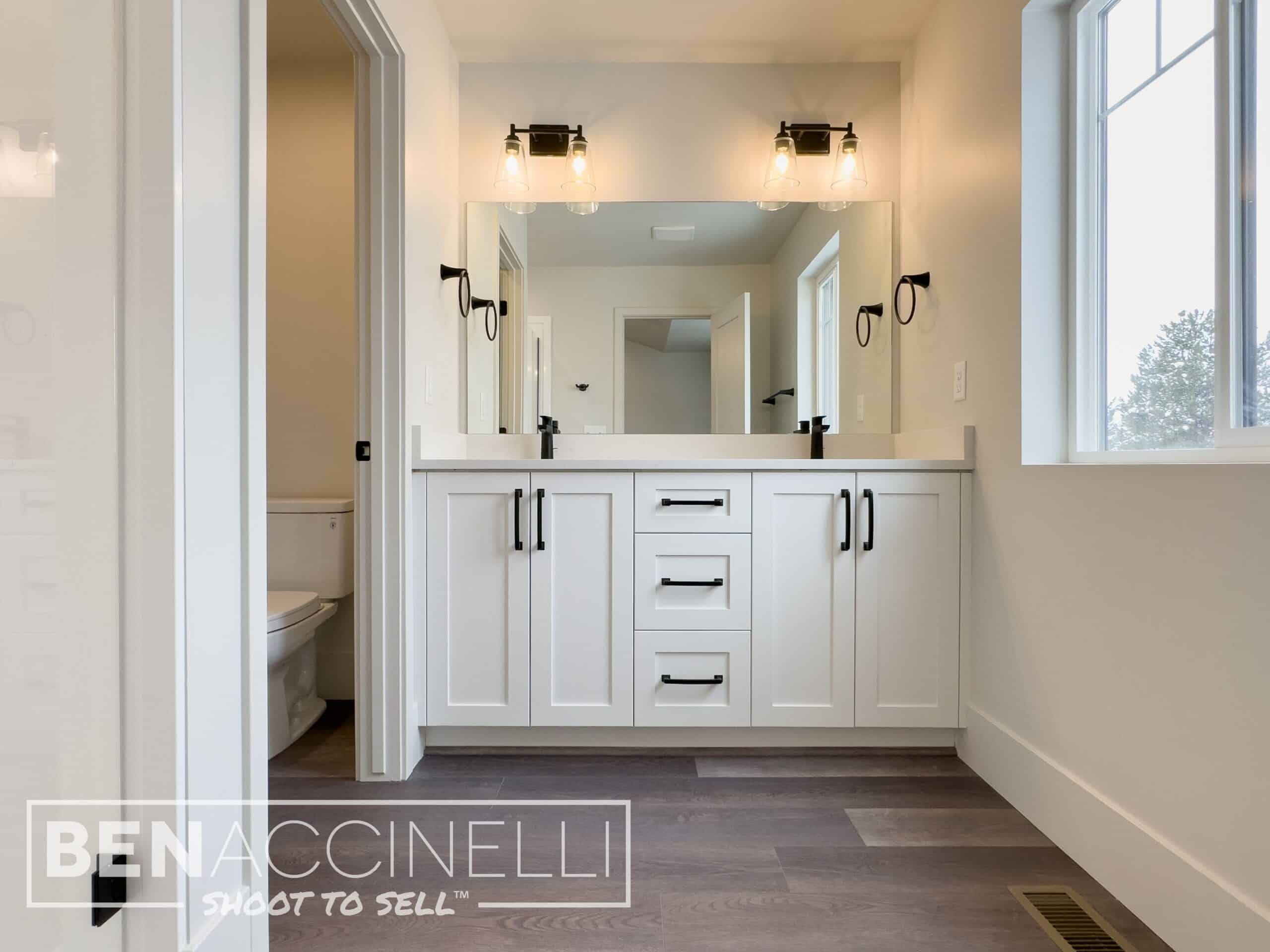
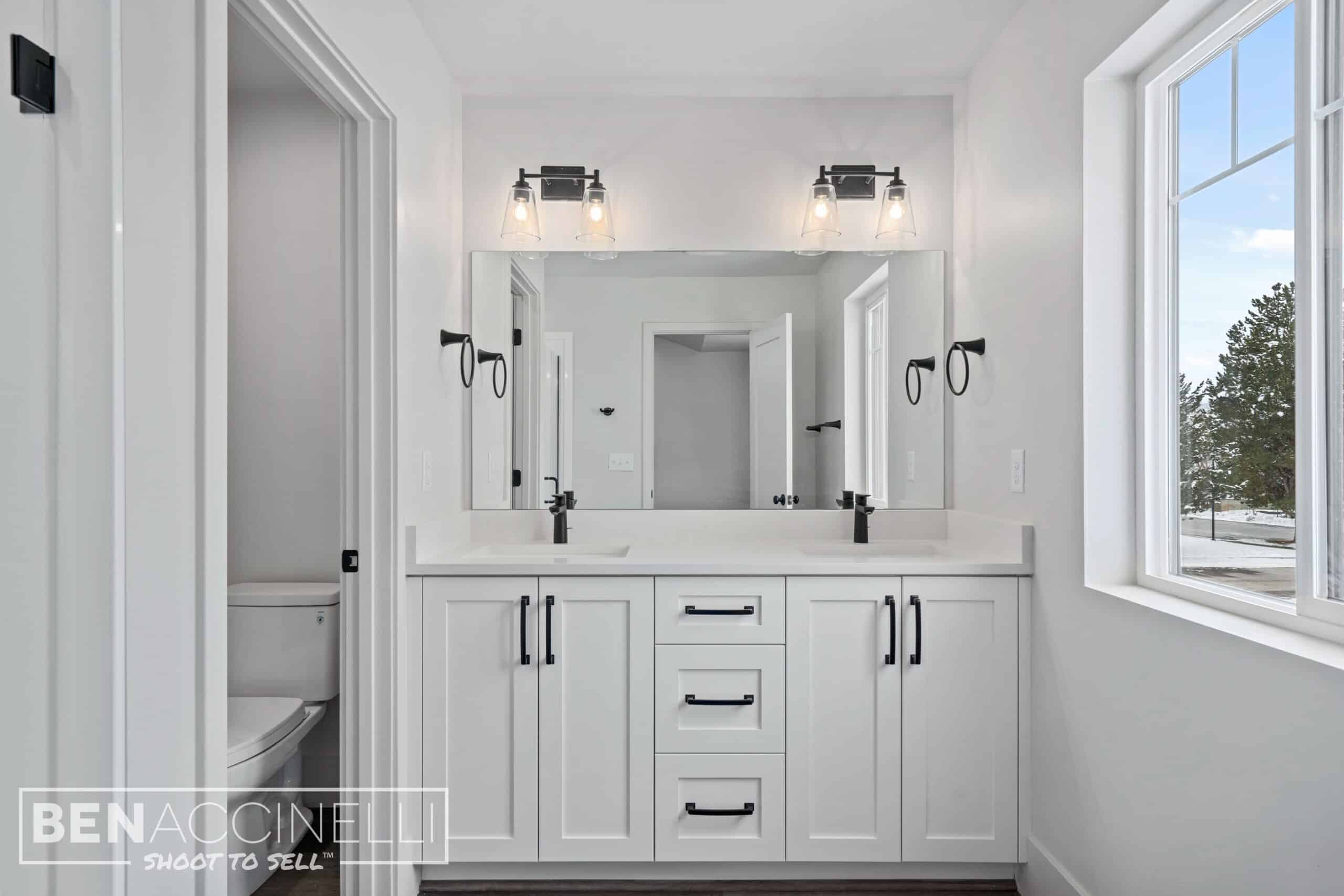
It does take practice to master this process, but over time you’ll train your brain to recognize verticals and horizontals and know precisely how to move your camera to capture high-quality photos with a smartphone camera.
Lights Up
The next step to getting great photos with a smartphone is to make sure all the lights are on. I highly recommend turning on all the lights in a property before taking photos. This is because it helps to create a warm and inviting atmosphere, making the property more appealing to potential buyers. Additionally, it helps to reduce harsh shadows and create a more evenly lit space, resulting in better quality photographs. So, always take the time to turn on all the lights and let your camera capture the true essence of the property.
Capturing More Walls
Another one is to take advantage of the phone’s agility and flexibility. When photographing a room, it’s crucial to include at least three walls in the shot. I’ve seen both amateur and professional photographers make the mistake of capturing only two walls—even with DSLR photos—which doesn’t give viewers a clear idea of the space. Aim to get three walls in every room, and in some cases, even four walls if possible. Below are a few examples of getting the third wall with a DSLR. If a DSLR is capable of getting a third or fourth wall to compose the room into frame, a cell phone should be more than capable if it has the option of a wide angle lens.
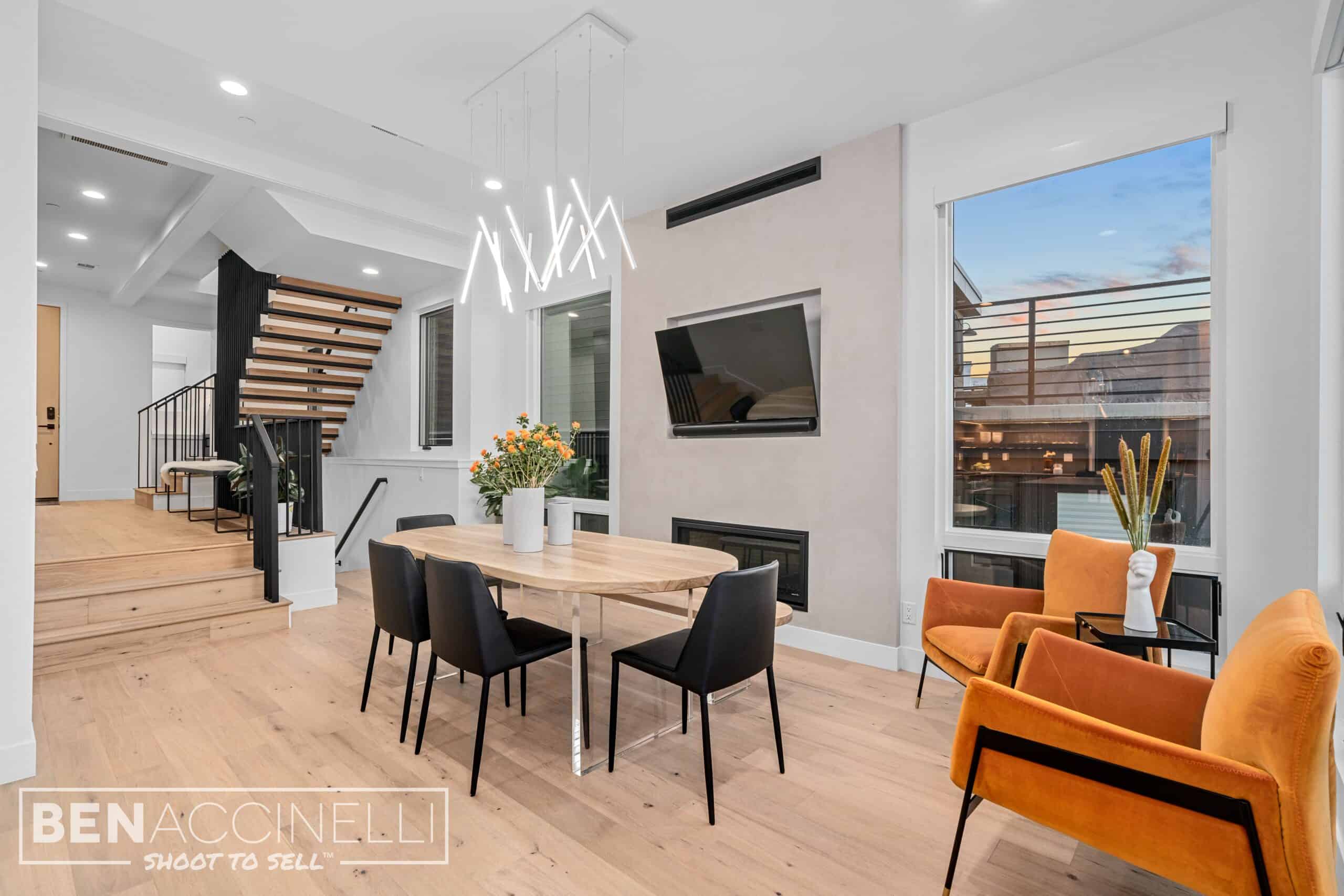
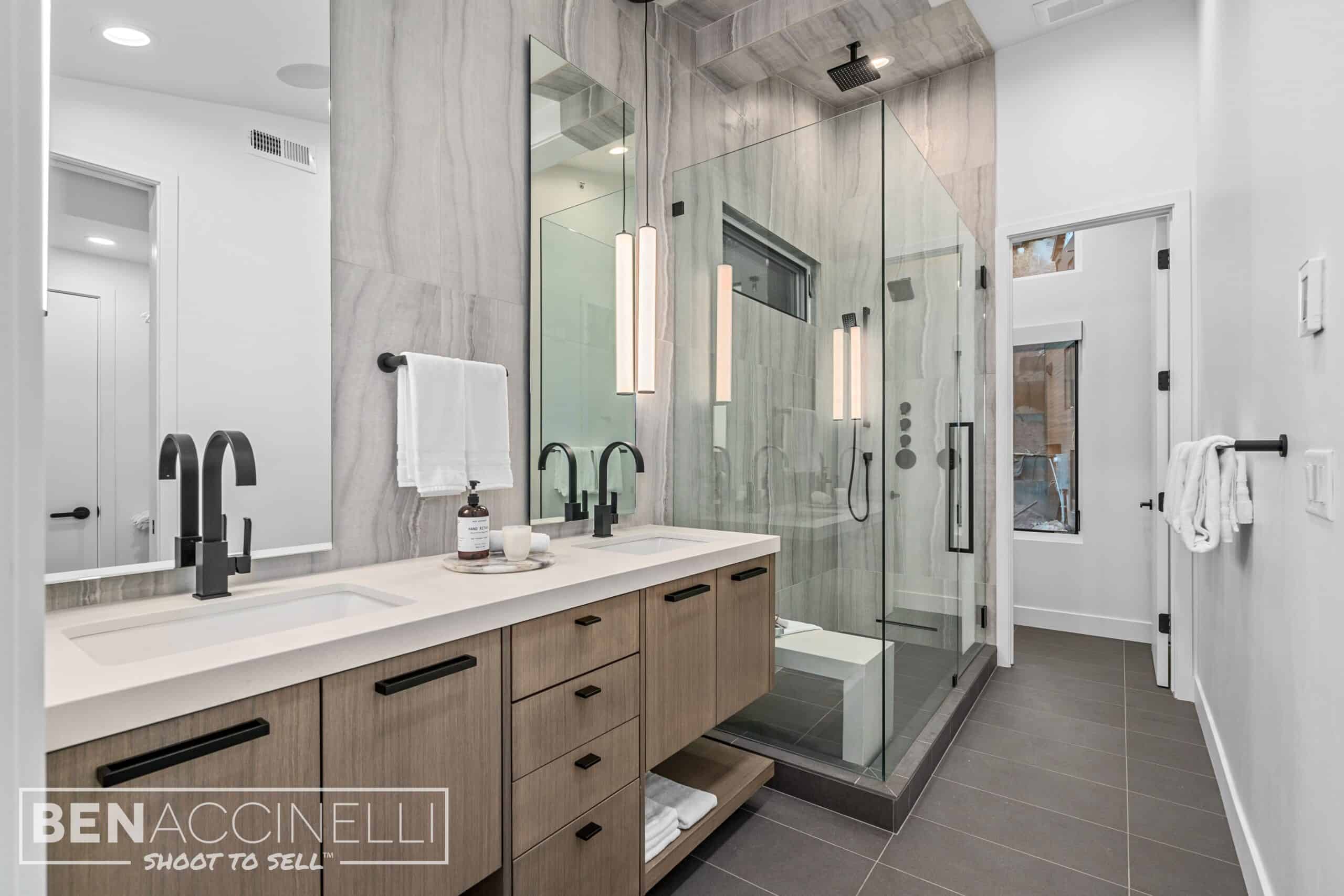
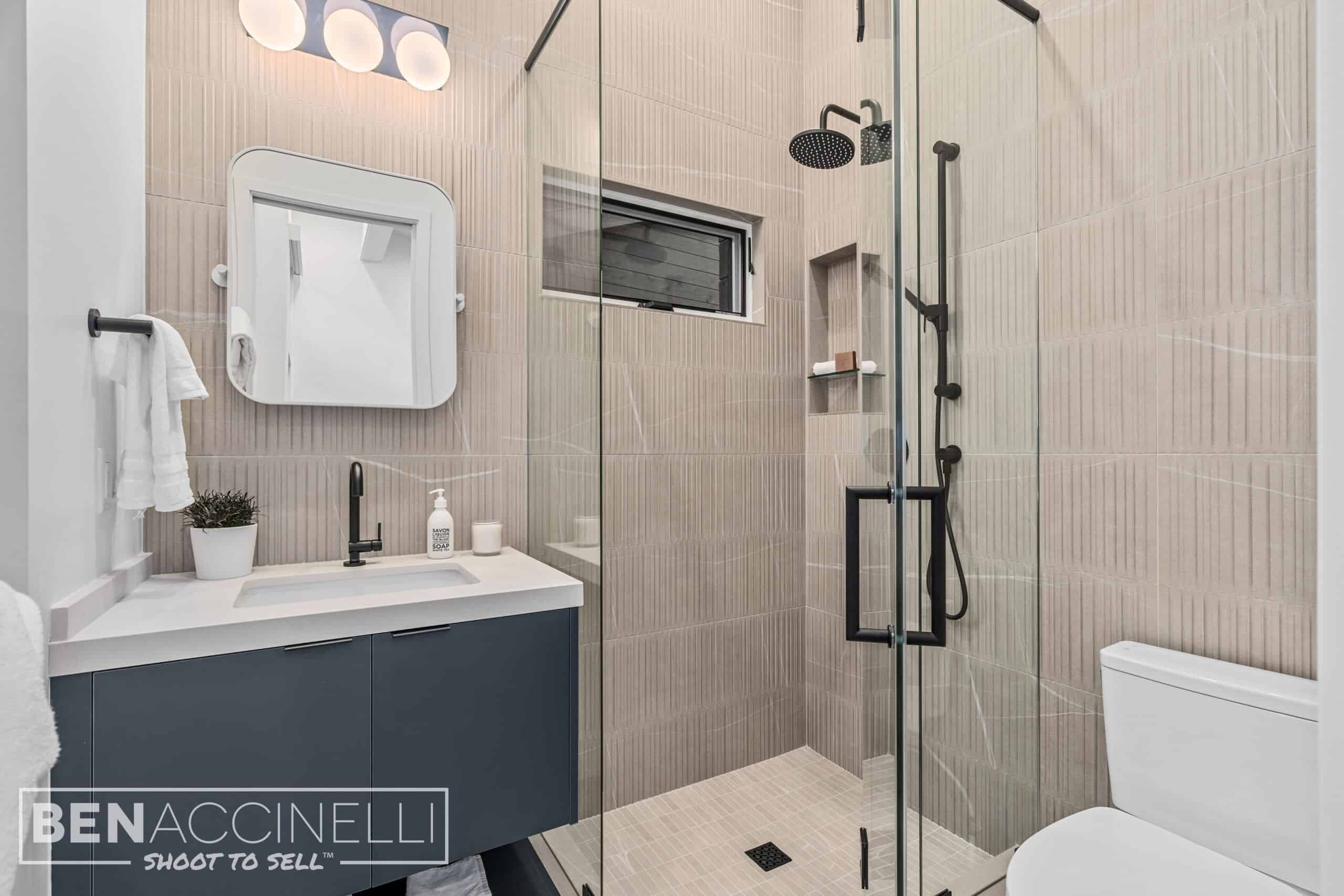
Prioritize Interior Exposure
Another rule of thumb is to prioritize the interior exposure over the window exposure when shooting with a phone camera. Unlike a DSLR camera where you would expose for the windows to get clear and see-through images, phone cameras don’t work the same way. When using a phone camera for real estate photography, it’s best to prioritize the interior exposure first and then adjust the window exposure later. This way, you can ensure that the interior of the property is well-exposed and captures the attention of potential buyers.
By following these basic principles, you’ll be ahead of most photographers and on your way to producing high-quality real estate photos. Of course, it’s also essential to learn the basics of photography and continue to improve your skills over time.
Conclusion
In summary, shooting with a phone camera is possible for real estate photography, but the images won’t be as high quality as those taken with a DSLR camera. To take good-enough images, you need to be intentional in how you use your phone camera, keeping the camera level and aligned vertically while training your brain to see the verticals and horizontals.
Shooting with a camera phone can be a good starting point, but if you want to make your business a sustainable business, you’ll need to invest in professional photography equipment.
